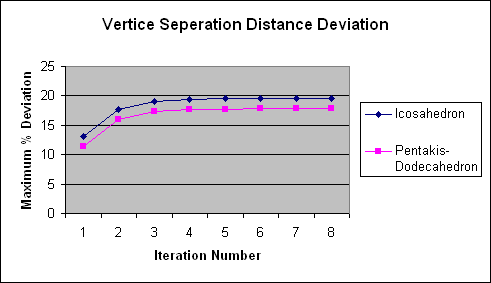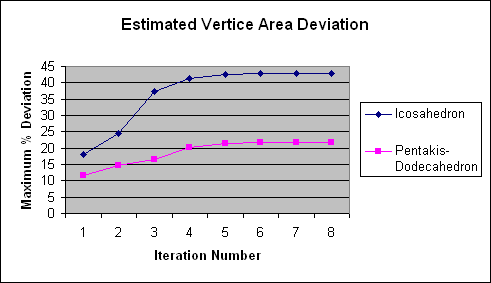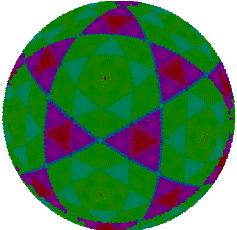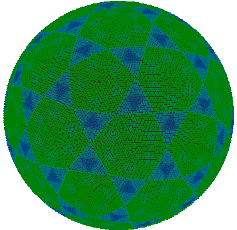To create a mostly hexagonal spherical grid, two basic starting polyhedra are considered.
Icosahedron:

perfect triangles |
and |
Pentakis-Dodecahedron:
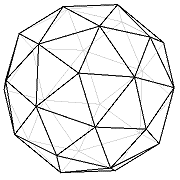
almost perfect triangles |
A Pentakis-Dodecahedron is a Dodecahedron with each pentagonal face divided into five spherical triangles.


|
Each triangle is recursively subdivided into four smaller triangles using a 4-fold division until a desired resolution is achieved. This iterative process is best described in pictoral form:
Planar Triangles: All sub-triangles have the same area. |
Spherical Triangles: All sub-triangles do not have the same area. |
To create a mostly hexagonal tessellation, vertices are converted to faces at the end of the iterative process. (The tessellation will contain twelve pentagonal faces, the rest will be hexagons.)
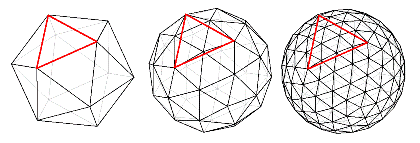
|
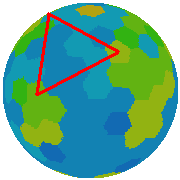
|





